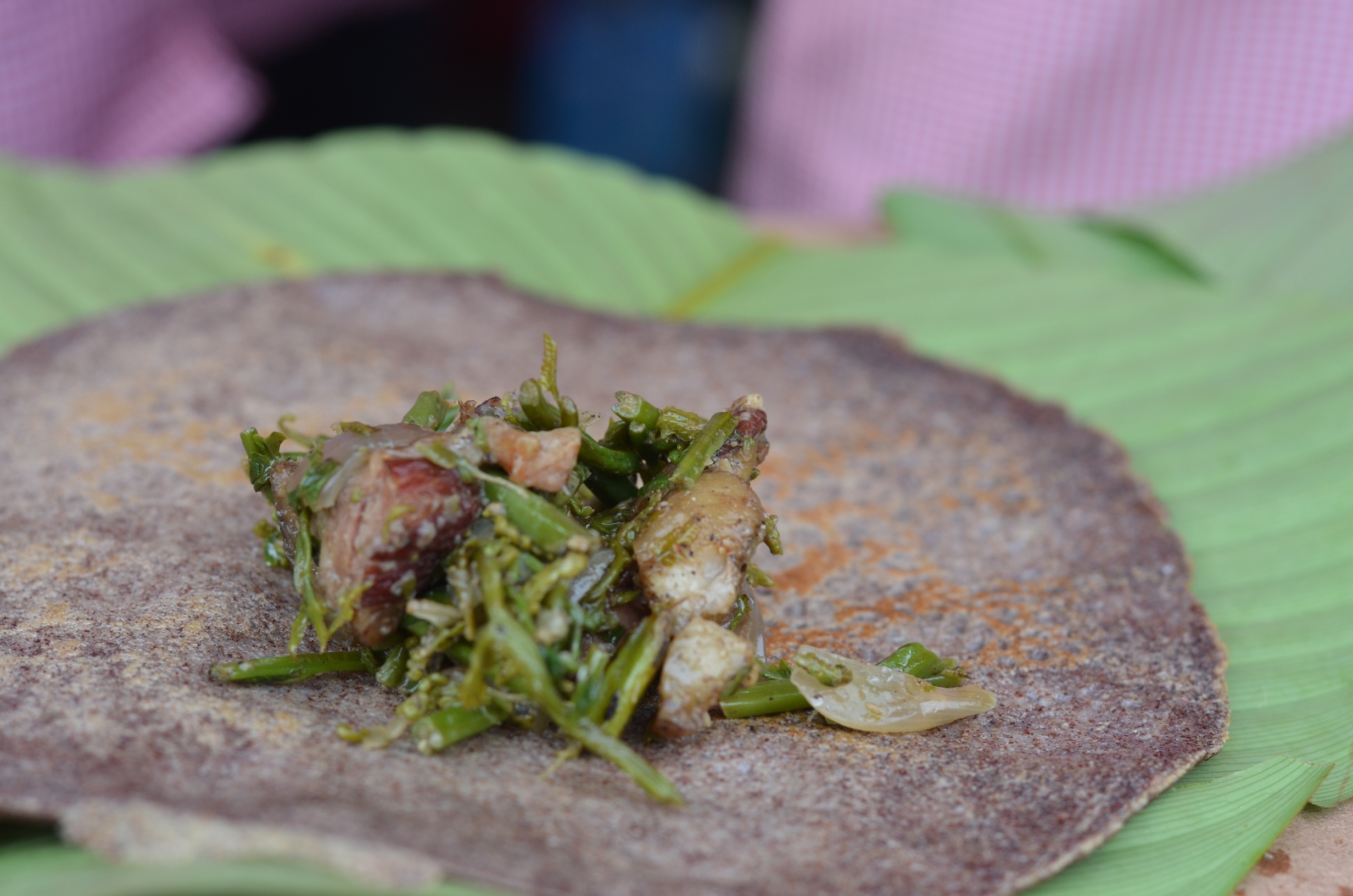 Photo: NESFAS/ Raisa Daimary” width=”2464″ height=”1632″ />
Photo: NESFAS/ Raisa Daimary” width=”2464″ height=”1632″ />
“I would gladly take it home for daily intake,” Mr. Nari, Executive member of the Nongrim hills localilty, commented after having a couple of sips of the exotic Khasi Spice Bomb. Swishing his drink around in the bamboo cup where the drinks were being served to reduce plastic use, he said, “I would recommend that this drink should be made available in every household. For apart from its easily available ingredients which are no doubt, healthy, it is an amazing drink.” The Khasi Spice Bomb was one of the specialities of the day, made from the simple amalgamation of local ingredients like ginger, lemon, turmeric and honey.
The NESFAS team had been quite busy last weekend preparing for the food fest that unfolded at M. S Complex, Lower Nongrim Hills on Saturday. Apart from the aforementioned drink, the menu featured other striking dishes which to the eyes of the city foodies could well be passed off as ‘out of the norm’, or as one bystander, Shakti, remarked, “endangered dishes”. This remark was dropped especially on the millet crepe which was the talk of the day and aimed towards the dwindling importance that millet has in these parts of the country.
The stalls lined up that day were colourful and varied, as there were all kinds of food and drinks suitable for the season. There was a Naga food stall, a summer ‘Mocktail’ booth, a Jadoh corner as well as a special car sale. The day was further glorified by the presence of young musicians, happily singing in the quieter atmosphere of the evening, marking the profound success of the food festival.
It could be gathered that the NESFAS stall made quite an impression, whereby Aren, a PhD scholar and researcher from the English and Foreign Languages University said, “You can’t get a more successful USP than a ‘local food’ tag”. Indeed, the crowds that swarmed the stalls of NESFAS were driven more by a sense of curiosity, for the term “slow food” had not yet penetrated the ears of the mainstream. Ms. Dawan, a faculty at MLCU, explained that a lot of people of her age were lovers of ‘genuine’ local food. It, however, is just a question of availability and authenticity. “It makes me really proud to see our favourite foods being projected in food festivals like these, which is quite singular, I may say. I should heavily congratulate the people behind the making of the cuisines; I have never had this kind of food fusion before”.
Ms. Kritika Suratkal, a trained Chef from Pune and an intern from Nordic Food Lab is one of the heads behind the innovative dishes put up by NESFAS, stressed on the need for people to realise and appreciate the wealth of unique local ingredients available in the
North East today.
“There’s great potential for creativity and innovation of the cuisine itself. Though we have uncountable varieties of agricultural products and food crops here, it seems that the pre-existing food habit revolves only around rice. There is no substantial intake of vegetables and other food. For the people in these parts, rice means food and food means rice”, she added.
The dishes that Kritika and the team designed together were aimed at the reintroduction of millet and other such ingredients, which are not only indigenous and historically linked to the communities in Meghalaya but also as healthy as they were versatile, into the modern food culture through flavour innovation and better presentation.
 Translate
Translate




